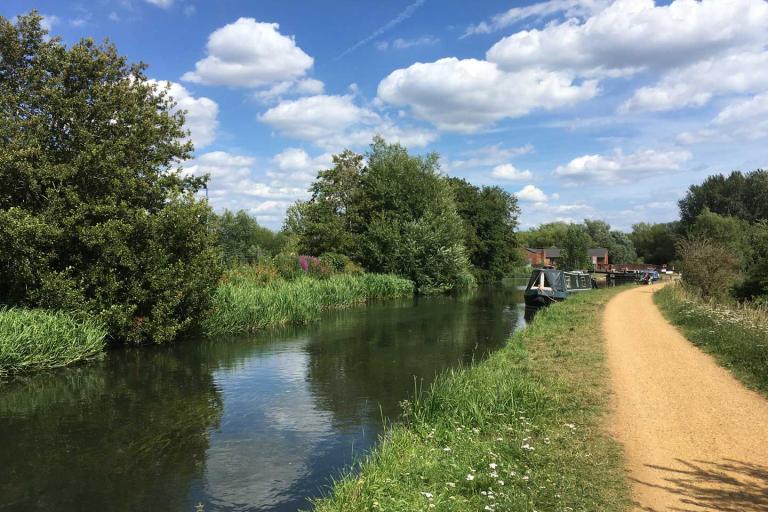Our vision
We live in a better environment because decisions are made using our data and insight.
Our mission
We are impartial environmental data scientists who collect, manage, analyse and share data in Oxfordshire and Berkshire so people can make sound decisions that protect and enhance our environment.
Our work
Our primary focus is to:
- facilitate the sharing of critical knowledge
- supporting scientific research
- aid responsible decision-making in planning and development, and wildlife conservation
We are:
- a not-for-profit organisation, hosted by Oxfordshire County Council and run by a partnership
- the regional delivery node of the National Biodiversity Network
- a member of Association of Local Records Centres (ALERC)
- at the centre of a network of recorders and data-users in Berkshire and Oxfordshire
- the only complete ecological information hub in Berkshire and Oxfordshire
We:
- provide our funding partners with annually updated species and site information
- conduct surveys of local wildlife sites.
- carry out data analysis to monitor local authority Local Plans

Our services
We provide data searches, data licensing and data exchanges to:
- ecological consultants
- parish councils
- local people
- conservation bodies
- landowners
- students
- utility companies
Visit our data search pages to learn about data searches, licensing, and exchanges.
We encourage and support individuals and communities to recognise the importance of recording environmental information. This knowledge helps them make sound decisions that protect and enhance our environment.
We provide other services such as:
- ecological surveys
- data analysis and presentation
- GIS and ecology training
- production of promotional leaflets
Visit our services page for examples of our work.
Our region
We cover all of Berkshire and Oxfordshire. The local authority areas are:
- Cherwell
- West Oxfordshire
- Oxford City
- Vale of White Horse
- South Oxfordshire
- West Berkshire
- Reading
- Wokingham
- Windsor and Maidenhead
- Bracknell Forest
- Slough
Use the Association of Local Environmental Records Centres (ALERC) search to find other LERCs across the UK.
Our records
We hold:
- over 5 million records of flora and fauna in Berkshire and Oxfordshire
- information about Local Wildlife and Geological Sites
- NERC Act S41 habitats of principal importance (previously called UK biodiversity action plan (BAP) habitats)
- Ecological networks (Conservation Target Areas and Biodiversity Opportunity Areas)
We collect this data from:
- the public
- skilled volunteer and amateur recorders
- wildlife charities (BBOWT and RSPB)
- government agencies (the Environment Agency and local authorities)
- ecological consultants
See our data quality page to learn how we manage, verify and validate data.
How our information is used
The following groups use our information:
- planning authorities and developers - to make informed decisions about the design and location of sustainable development
- farmers, landowners and conservation organisations - to manage land in the best way to enhance biodiversity
- nature partnerships - to direct wildlife conservation work
- teachers, students and scientists - for education and scientific research
Our funding
Our funding comes from:
- funding partners
- commercial sales of our services
- donations (a small proportion)
Our funding partners include all the local authorities in Oxfordshire and Berkshire and the Environment Agency. We work closely with the Berkshire, Buckinghamshire, and Oxfordshire Wildlife Trust (BBOWT). These partners contribute to collecting, processing, and distributing environmental information. Our partnerships produce efficiencies of scale, creating excellent value for money.
TVERC Steering Group
The Steering Group guides TVERC through our director. The group consists of representatives from the partners, data users and data providers.
The group operates on a consensus basis under agreed-upon terms of reference. Each partner has representation in the group, either directly or via consultation and feedback. All partners agree to:
- support the group
- use all reasonable endeavours to ensure it functions effectively and decisions are made expediently
The director is responsible for:
- reporting on progress at each group meeting
- ensuring all products and services are delivered on time and within budget
- ensuring outputs are achieved
The steering group monitors progress by meeting at least three times a year (usually May, September and January). The group records all decisions in meeting minutes.
Get started with recording
Learn how to record the wildlife you see and contribute to our data collection.
We can help get you started and develop new skills.